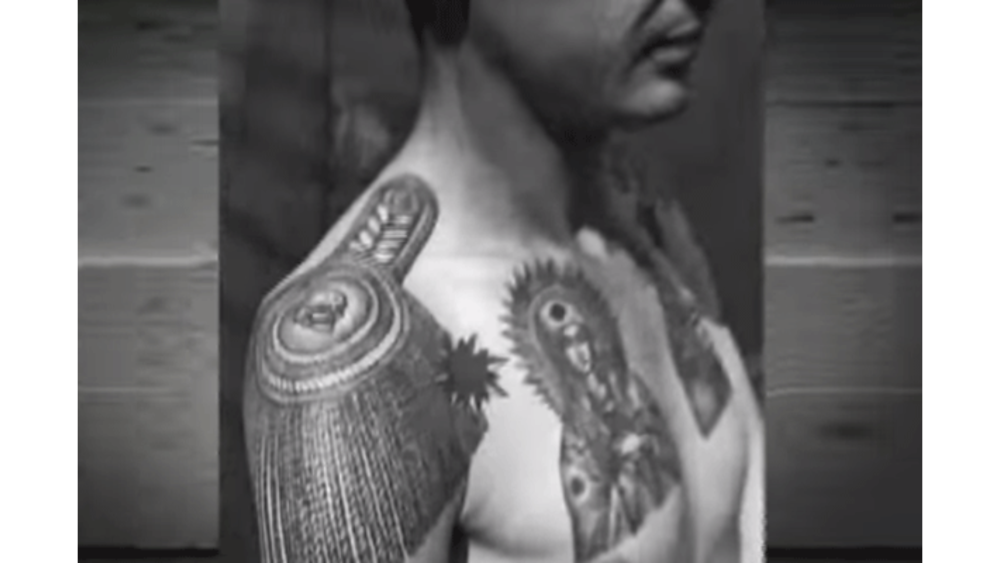By C1 Staff
In the era of the Soviet party, Russian prisons were controlled by a gang known as the Thieves in Law. This gang enforced strict guidelines, including what and where prisoners could tattoo on their bodies.
These tattoos became intricate works of art that detailed not only an inmate’s crimes, but a good portion of their lives. Tattoos had to be earned through physical acts or other ways of standing up to authority, whether it was inside or outside of the prison. If the tattoos were undeserved, they would be forcibly removed from the person before they were further punished with beatings or worse.
Between the image itself and the placement on a person’s body, each tattoo tells a distinctive story and imparts important information to other inmates inside a correctional facility.
These days, the tattoo guidelines of the Thieves in Law are no longer followed and inmates are creating their own images with varied meanings. Still, it’s interesting to look at the past and see what inmates used to ink on their skin in order to have a foundation of information to build off of.
Here are 12 Russian prison tattoos and their perceived meanings.
1. Thieves’ stars
Depending on the location on the body, the stars convey a prisoner’s status. When worn on the knees, the stars are a sign of a prisoner who commands respect. The implied meaning is “I will never get on my knees in front of anyone.”
Stars on the chest mark a higher rank. Only the most respected can wear the thieves’ stars in that area of the body. The tattoos must be earned, and an inmate wearing an undeserved tattoo risks a beating or worse.
2. Portraits of Stalin and Lenin
In the 1900s, prisoners believed placing tattooed portraits of Lenin and Stalin on their chests would protect them from a firing squad. The authorities would not shoot at any images of their leaders; instead, they would shoot prisoners in the back of the head.
3. Epaulettes
An epaulet, or ornamental shoulder piece typically found on a military uniform, are used to signify rank within the Thieves In Law. Known ranks were captains, lieutenants and colonels.
4. Oskal (Big Grin)
Tigers, leopards or snarling wolves are called Oskals, the Russian word for ‘Big Grin.’ These tattoos indicate aggression or hostility toward the authorities.
5. Spider
The spider crawling on the right shoulder is indicative of a thief. If the spider is crawling up the shoulder, the thief is still active. If the spider is crawling down, this means the thief is done with the criminal life.
6. Cathedrals (Kremlin)
Cathedrals, or Kremlins, represent time spent incarcerated and are iconic Russian prison tattoos. The more domes an inmate’s church has indicates the number of sentences they have served over their lifetime. These tattoos can be found anywhere on the body.
7. Manacles
Manacles are another sign of sentencing and are sometimes paired with cathedrals found on the hands. Manacles mean that the sentence the inmate served was more than five years in length.
8. Grudge
A grudge is generally depicted as a dog bearing its teeth. This implies a grudge with authorities, or a grudge with life in general. It shows disdain for police and other authority figures.
9. Rings
Ring tattoos on the hands are immediately indicative of a convict. Their meanings range from what type of crimes the convict committed, to aggression against authority, to sentences served.
10. Woman
A woman tattooed onto the chest of an inmate is symbolic of that person having been initiated into the Thieves in Law. This type of tattoo may incorporate a rose. Conversely, if that woman is placed on the stomach, then the tattoo is a sign of a prostitute.
11. Flowers
A tulip or a rose ensnared in barbed wire or wrapped around a dagger is symbolic of a convicted imprisoned before the age of 18.
12. Skulls
A skull is a symbol of standing up against authority; it means to “bear one’s teeth” against the Soviet power. This was to prove they were not afraid of authority. Inmates earn these tattoos by standing up to figures of authority, such as correctional officers.
This article, originally published July 23, 2015, has been updated.






























